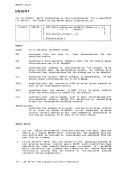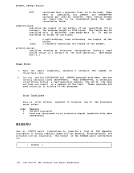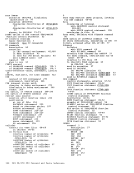copyfile data file a fix data file a (recfm f lrecl
the converted records. -
If the records in a file being copied are variable-length, each
output record is padded with blanks to the specified record length. If
records, you can specify the
blanks are truncated:
copyfile data file a (recfm v trunc
If
ignored and the output record length is taken from the longest record in
the input file.
When
you
a blank. If you specify:
then each record
variable-length
in the file
Assuming that
file, the record length is taken from the longest
Note that if
that was padded with a character other than a blank, you must specify
the FILL option to indicate the pad character, so that character is
truncated.
The FILL option can also be used to specify the packing character
used with the PACK option. When you use the PACK option, a file is
compressed as follows: all occurrences of two or more blanks are
encoded as one character, and four or more
character are written as three characters. If you use the FILL option
to specify a fill character, then that character is treated as a blank
when records are compressed.
character when you unpack the file since this is determined from the
filels pack record. If the fill character is specified, it is ignored.
do not need to specify the FILL option unless you know that some other
character appears more frequently.
When
example:
compresses all
identifiers. The command:
copyfile * assemble a = script = (recfm trunc
converts all
filetypes to






















































































































































































































































































































































































































